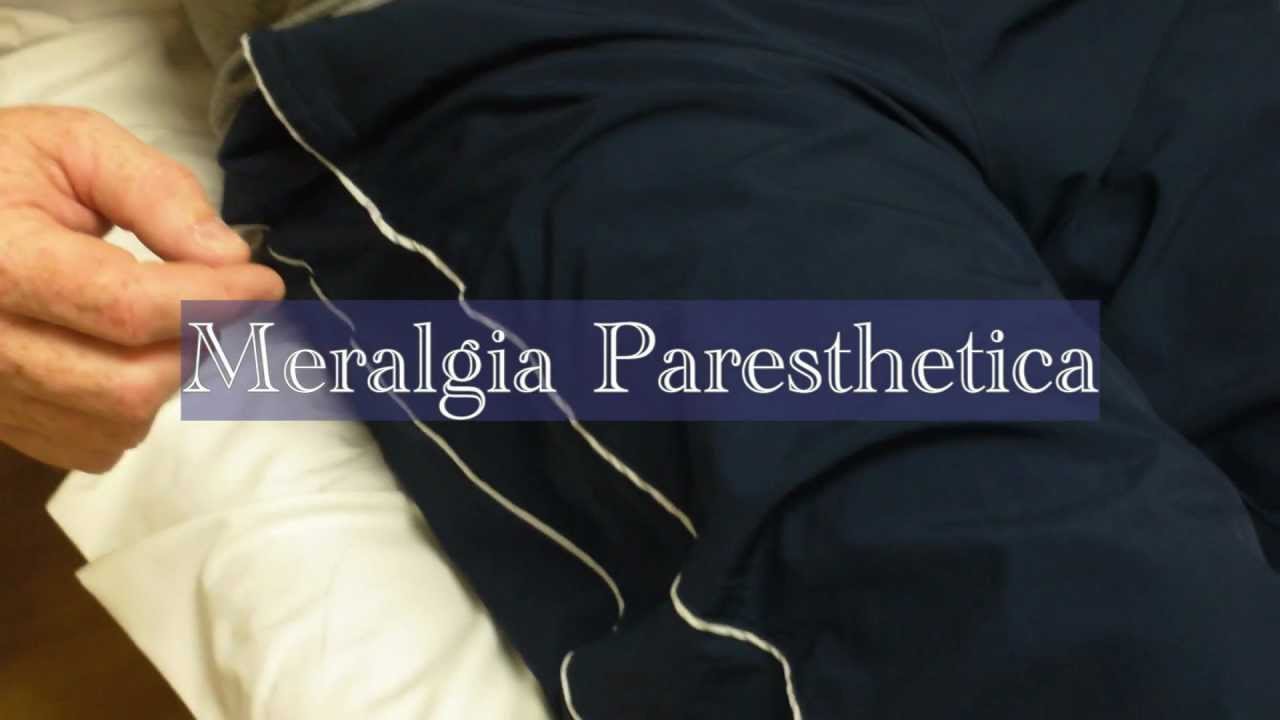Meralgia Paresthetica Causes, Symptoms, Diagnosis and Treatment

What Is Meralgia Paresthetica?
Meralgia paresthetica or Meralgia paraesthetica is numbness or pain in the outer thigh not caused by injury to the thigh, but by injury to a nerve that extends from the thigh to the spinal column.
This chronic neurological disorder involves a single nerve—the lateral cutaneous nerve of thigh, which is also called the lateral femoral cutaneous nerve.
Tight clothing, obesity or weight gain, and pregnancy are common causes of meralgia paresthetica. However, meralgia paresthetica can also be due to local trauma or a disease, such as diabetes.
In severe cases, treatment may include medications to relieve discomfort or, rarely, surgery.
Causes Of Meralgia Paresthetica:
Meralgia paresthetica occurs when the lateral femoral cutaneous nerve becomes compressed, or “pinched.”
Common causes of this compression include any condition that increases pressure on the groin, including:
- Tight clothing, such as belts, corsets and tight pants
- Obesity or weight gain
- Wearing a heavy tool belt
- Pregnancy
- Scar tissue near the inguinal ligament due to injury or past surgery
- A disease that can damage the nerves, like diabetes
- Repetitive motions that could irritate the nerve, such as certain leg movements
- Standing or walking for a long time
People Between The Ages Of 30 And 60 Are At A Higher Risk Of Developing Meralgia Paresthetica.
Symptoms Of Meralgia Paresthetica:
Signs and symptoms may include:
- Pain on the outer side of the thigh, occasionally extending to the outer side of the knee, usually constant.
- A burning sensation, tingling, or numbness in the same area
- Multiple bee-sting like pains in the affected area
- Occasionally, aching in the groin area or pain spreading across the buttocks
- Usually more sensitive to light touch than to firm pressure
- Hyper sensitivity to heat (warm water from shower feels like it is burning the area)
- Occasionally, patients may complain of itching or a bothersome sensation rather than pain in the affected area.
Diagnosis Of Meralgia Paresthetica:
The following tests help confirm the diagnosis:
- Imaging tests of leg and hip
X-rays
MRI - Electromyography (EMG).
- Nerve conduction study, to measure how fast electrical signals travel through the nerves.
- Abdominal and pelvic exam
- Nerve blockade.
Treatment Of Meralgia Paresthetica:
The following treatment options are available:
- Conservative measures
Wearing looser clothing
Losing weight
Taking OTC pain relievers
o acetaminophen (Tylenol, others)
o ibruprofen (Advil, Motrin IB, others)
o aspirin - Medications
Corticosteroid injections.
o Possible side effects include:
joint infection
nerve damage
Pain
Whitening of skin around the injection site.
Tricyclic antidepressants.
o Side effects include:
Drowsiness
dry mouth
Constipation
Impaired sexual functioning.
Gabapentin (Neurontin), phenytoin (Dilantin) or pregabalin (Lyrica).
o Side effects include:
Constipation
Nausea
Dizziness
Drowsiness
Lightheadedness. - Surgery
By : Natural Health News




